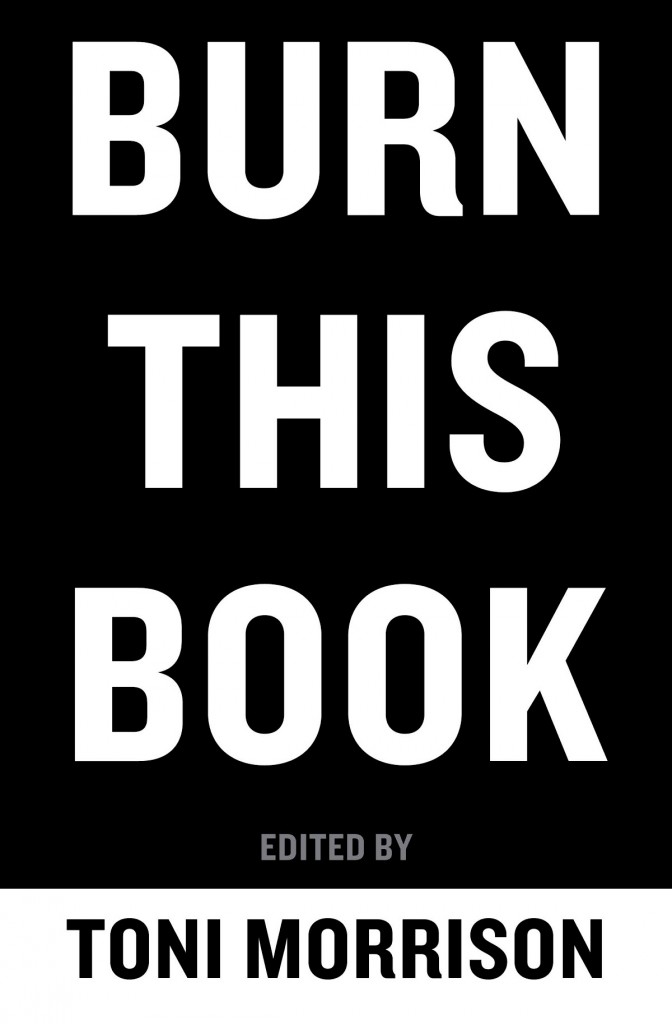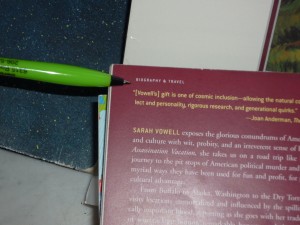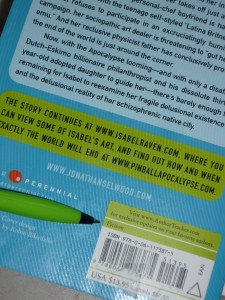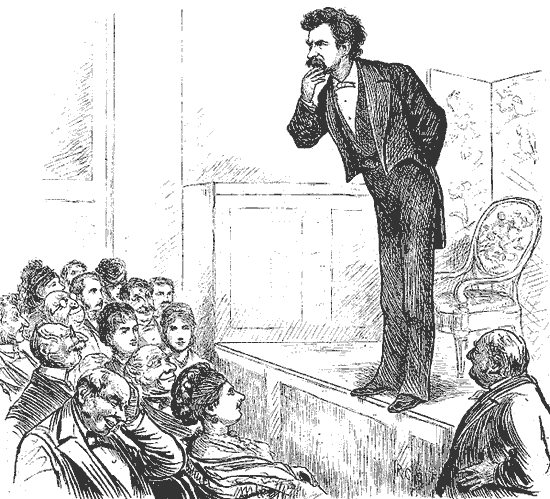
Within mere seconds of posting the first in my annual series on pitching — the much-feared practice of approaching an agent face-to-face to try to interest her in your manuscript, rather than via the far less intimidating query letter or e-mail — I felt the ether fill with two discordant emotions rising in a cloud from my readers: extreme panic and terrible annoyance. (Actually, there was a third, gratitude from those of you who aren’t scheduled to pitch anytime soon, but the other two smogs were so virulent that it took me a while to notice #3.)
I can easily understand both the panicked and annoyed reactions, of course: the prospect of sitting down with an agent who may very well reject you on the spot, much less stopping her in a conference hallway, is monumentally frightening. Rejection’s bad enough when it comes in the mail, right? And believe me, I can certainly identify with the annoyance of learning that connecting successfully with an agent or editor in a pitch appointment often requires substantial advance homework; conference brochures and websites tend to imply that all a writer has to do in order to impress the agent of his dreams is to show up ready to talk about his book. Albeit briefly.
Honestly, I’ve been blogging and teaching about pitching long enough to expect both of these reactions — and to know that there is only one thing I can say that will help the panicked and annoyed see why I’m so committed to making absolutely certain that all of my readers learn the basic skills of pitching, rather than just the ones who have appointments with agents at conferences in the weeks to come. It’s this:
A good 90% of pitch rejections have nothing to do with the quality of the book being pitched.
Yes, really: the vast majority of the time, pitch recipients say, “I’m sorry,” because of other factors, such as bad fit, a book category that the agent does not represent, an insufficient platform (that’s for nonfiction; don’t worry, we’re getting to that), an incoherent pitch (a common side effect of panic), lack of freshness in the story, the agent’s having had no success selling a manuscript, the writer’s looking just like someone who was really, really mean to the agent in high school (hey, they’re human), and so on, ad infinitum. Some of these factors, like the coherence of the pitch, lie within the writer’s control; some, like the resemblance to the high school bully, do not.
Throughout this series, we’re going to talk about how to tell the difference — and to prepare to handle the parts of the process you can control beautifully.
There, that made those of you who’ve pitched before feel a whole lot better, didn’t it? And for the rest of you, does it make more sense that I want to talk you through how to avoid the pitfalls that scuttle the average pitch?
Excellent. Let’s get back to business and talk about the single most common reason agents give for rejecting both pitches and queries: they just don’t represent that book category.
Yesterday, I was waxing poetic on an must-follow piece of advice — if you are looking for an agent (as the vast majority of writers willing to shell out the dosh to attend major conferences are), it makes sense only to invest in attending conferences where agents with a proven track record of selling with your type of book will be available for your pitching pleasure. Feel free to derive an important corollary from this excellent axiom: from this moment on, ONLY pitch or query your book to agents who represent that kind of book.
Seems so simple, put that way, doesn’t it? Yet every year, literally millions of aspiring writers either take a scattershot approach, querying fairly randomly (thus all of those “Dear Agent” letters that folks in the industry hate so much) or let the conferences do the selection for them, pitching to whoever is there with a winsome disregard for matching their books with the right agent.
Please don’t do that to yourself; as I pointed out last time, it can only end in tears.
I cannot say this often enough: you do not want to be signed by just ANY agent — although, in the throes of agent-seeking, it’s certainly very easy to start believing that any agent at all would be better than none. You want the agent who is going to be able to sell your work quickly and well.
Believe it or not, even the surliest agent who ever strode contemptuously into a literary conference and brushed off a pitcher wants this as well. Good agents don’t like hurting aspiring writers’ feelings, after all; they merely want to sign authors of books they know they can sell — and believe me, they walk into pitch meetings quite aware of what the editors to whom they have already successfully sold books are looking to buy at the moment.
Being intimately familiar with the publishing market is, after all, part of their job.
I’m sensing some disgruntlement amongst those of you who have pitched before (an improvement on panic and annoyance, certainly, but still). “But Anne,” these veterans of the conference wars protest, “that doesn’t always seem to be true. There are plenty of books like mine on bookstore shelves right now, but I’ve had agents tell me that there’s no market for a book like mine. What gives?”
I’m very glad you brought this up, disgruntled protestors: many, many aspiring writers aren’t aware of the distinction between the current publishing market (what editors are looking to buy right now) and the current literary market (what’s occupying the shelves at Barnes & Noble). Books for sale to consumers right now were on the publishing market at least a year ago — in most cases, more like two years — and since agents are seldom able to sell new clients’ books within a few days of signing them to an agency contract, any of those books by first-time authors were probably making the rounds of conferences and/or being queried three or more years ago.
Thus, what’s on the shelves right now isn’t necessarily the best indicator of the needs of the current publishing market. An agent who is good at her job has to aware of both.
Which is, in case you were wondering, why they tend to be so quick to reject what doesn’t fall within their sphere of influence. Since they are inundated with queries and pitches, it is in their best interests to weed out the absolutely-nots as swiftly as humanly possible — and although it may not feel like it at the time, in yours as well.
Don’t believe me? Ask any author who has found herself spending a year or two in the purgatory of a representation contract with an agent who didn’t have the contacts to sell her book, but still snapped up the book because it was in an at-the-time-hot book category. (Yes, it happens. Far more often than either the agented or agents themselves like to admit.)
So if an agent who doesn’t represent your kind of work rejects you — and this is equally true if it happens at a conference or via query — be open to the possibility that it may not have anything to do with the quality of your writing or the idea you are pitching. It might just be a bad fit with that agent, or the agent’s current connections may not be looking for your kind of book.
Yes, no matter how beautifully it’s written. This part of the process is as much about practicality as about art.
I know it’s hard to accept this philosophically when your baby is rejected out of hand, but it is vital for your professional mental health that you bear the issue of fit constantly in mind while you are pitching and querying. Not only isn’t anything personal about a bad-fit rejection — it does not even begin to be a fair test of how the book will fly with an agent who does represent that kind of work.
Allow me to repeat that, because it’s awfully important: a book’s being rejected by an agent or editor who doesn’t represent that type of work is NOT a viable test of its marketability amongst those who do.
Thus it follows with an elegant inevitability that if you want to know whether your book is marketable, you should pitch or query it only to those with whom such a test WOULD be a good indicator of how the publishing industry might view it. Or, to put it another way, the best way to avoid this kind of rejection is not to pitch or query your book to any agent that isn’t predisposed to be interested in it.
The same logic applies to pitch meetings with editors, by the way. No editor in the business acquires across every conceivable genre; in fact, most editors’ ability to acquire is sharply limited by their publishing houses to just one or two types of book.
So it would be a waste of your pitching energies to, say, try to interest an editor who does exclusively mysteries in your fantasy novel, right? Right?
Check before you pitch. Fortunately, at most conferences, gleaning this information is almost absurdly simple: virtually every conference that hosts pitching sessions will schedule an agents’ forum before the pitch meetings start, so attendees can hear from the agents’ very lips what they are there looking to acquire. If you intend to pitch at the conference, do not, under any circumstances, skip this forum.
Yes, even if you were my rare prize student who went to the trouble of finding out prior to registering for the conference what the attending agents have been selling lately. Even for you, gold-star winner, attending the forum may have tangible benefits: since the publishing market mutates so often and so rapidly, the agent of your dreams may well be looking for a different kind of book today than last week. If so, he’s going to announce it at the forum.
Another solid reason to go hear the agents speak is — brace yourselves; this one is a trifle disillusioning — just because an agent is scheduled to attend a conference doesn’t necessarily mean that he will show up, particularly if the conference is a large one. Crises come up at agencies all the time, so last-minute changes to the roster of pitchable agents attending a conference are common enough that veteran conference attendees regard it as the norm, rather than the exception.
Try not to think of this as rude; regard it as an opportunity. Chances are, someone on that panel is going to represent your kind of book.
Speaking of pitching to editors, here’s another thing that any writer pitching at a North American conference ABSOLUTELY MUST KNOW: all of the major NYC publishing houses currently have policies forbidding their editors to acquire work by unagented writers.
Don’t believe me? Check their websites. For the adult book market, the policy is uniform. (Some YA imprints have different policies; again, it’s in your interests to check.)
This means, in essence, that the BEST that could happen if you pitched your book to an editor from one of these houses is that he might help you hook up with an agent. Although it’s somewhat counterintuitive, an editor at a smaller or regional house might have more leeway to pick up your book.
Sort of changes how you view those much-vaunted conference appointments with bigwig editors, doesn’t it?
I’m bringing this up because in most of the flavors of common being-discovered-at-a-conference fantasy, an editor from Random House or somewhere similar hears a pitch, falls over backwards in his chair, and offers a publication contract on the spot, neatly bypassing the often extended agent-seeking period entirely.
We all know the tune by now, right? Conference today, contract tomorrow, Oprah on Thursday.
In reality, even if an editor was blown over (figuratively, at least) by a pitch, he might buttonhole one of the attending agents at a conference cocktail party on your behalf, and they might together plot a future for the book, but you’re still going to have to impress that agent before you can sign with the editor.
In other words, pitching to an editor at a major house might help your book in the long run, but it will not enable you to skip the finding-the-agent step, as so many aspiring writers believe. Sorry.
Frankly, I think it’s really, really unfair to the editors from these houses that more writers’ conference promotional materials are not up front about this policy, considering that it’s hardly a secret — it’s common knowledge, at least amongst those already intimately familiar with the publishing market. Which means, incidentally, that most editors will assume that a writer attending the conference is already aware of it. It’s not as though the individual editor could change the status quo, after all, or as if he’s following the policy merely because he likes to taunt the hopeful.
Before any of you protest that at the last conference you attended, editors from the Big Five asked for your work as though they intended to pick you up regardless of your representation status, let me hasten to add that you are not alone: the we-accept-only-the-agented is most assuredly NOT the impression that most conference pitchers to editors receive.
There’s a reason for this: unless they are asked point-blank during an editors’ forum how many of them have come to the conference empowered to pick up a new author on the spot — a question well worth asking at an editors’ forum, hint, hint — most editors who attend conferences will speak glowingly about their authors, glossing over the fact that they met these authors not in settings like this, but through well-connected agents.
See earlier comment about common knowledge. They honestly do think you know. It doesn’t mean that they can’t give you some valuable advice.
But how are we to explain the fact that few conference brochures or websites are honest enough to feature the major houses’ policies next to the appropriate attending editors’ listings? Quite the opposite, in fact: most conference rhetoric surrounding pitch appointments with editors directly states the opposite, encouraging pitchers to believe that this meeting could be their big break.
I don’t think that conference organizers do this in order to be mean or misleading — I just think many of them are not hip to the current conditions of the industry. Trust me, no editor is going to jeopardize his job at Broadway by handing a contract to a writer his boss would throw a fit if he signed.
So why, you may be wondering, do editors from the majors attend literary conferences — and, once there, why do they request submissions?
This is an important question, because editors from the major houses request manuscripts from pitchers all the time — but not because they are looking to sign the author instantly on the strength of the book. They just want to get in on the ground floor if the book is going to be the next major bestseller.
That’s right: no editor wants to be the one who passed on the next DA VINCI CODE or TWILIGHT. It’s a gamble, pure and simple.
So even though they would almost certainly not in fact pick up the next DA VINCI CODE if its author DID pitch to them at a conference, having a personal connection with the author is a great means of queue-jumping. If one of them is nice enough to you, you might tell your agent (once you hook up with one) that you want your potential bestseller sent to that editor first.
Heck, if she’s nice enough to you, you might be gullible enough to insist that she gets an exclusive peek at it, so there cannot possibly be competitive bidding over the book.
Don’t laugh: it’s not a bad gamble, from their perspective. Aspiring writers, as I believe I have pointed out a couple of hundred times before, can get some strange ideas about loyalty owed to industry types who met them for a grand total of fifteen minutes once.
But deep in their steamy little hearts, those editors from major houses who ask you to send chapters will be hoping that you will land an agent before they get around to reading the manuscript they requested you send. If you are looking to pitch to an editor who might conceivably pick up your book right away, you are generally better off pitching to an editor from a smaller or regional house.
The overall moral: learning what individual agents and editors are looking for AND what their bosses will allow them to pick up (aside from the next DA VINCI CODE, of course) will help you target both your conference pitches and your queries more effectively. Everyone — agents, editors, and writers alike — are happier when you do.
Honest. Nobody concerned wants to break your heart gratuitously; it’s would be a waste of their scant bestseller-seeking time.
Getting a trifle depressed? Don’t worry — I’m almost through with the don’t list. In the meantime, keep repeating to yourself: they don’t reject to be mean; they don’t reject to be mean; they don’t reject to be mean. They’re doing it to fight their way to the book they can support wholeheartedly.
Trust me: after you do hook up with the right agent for your book, you’re going to be happy that they’re so selective. Honest.
More balm to the troubled pre-pitching soul follows next time, of course. Keep up the good work!




 Paula Neves has been writing across genres since she was a teen, but has always loved poetry, to which she keeps returning. Her poetry has appeared in
Paula Neves has been writing across genres since she was a teen, but has always loved poetry, to which she keeps returning. Her poetry has appeared in 




 PS: lovers of fluffy bunnies and winsome chicks should make sure to visit Author! Author this weekend, when we will be visited by a guest blogger I’ve been hoping for a long time would join us here. As some of you may have begun to suspect over the past few days, I’m pretty excited about the prospect.
PS: lovers of fluffy bunnies and winsome chicks should make sure to visit Author! Author this weekend, when we will be visited by a guest blogger I’ve been hoping for a long time would join us here. As some of you may have begun to suspect over the past few days, I’m pretty excited about the prospect.
 PS: don’t forget to tune in on Friday for our end-of-the-week treat!
PS: don’t forget to tune in on Friday for our end-of-the-week treat!









 is not the same thing as this
is not the same thing as this 



